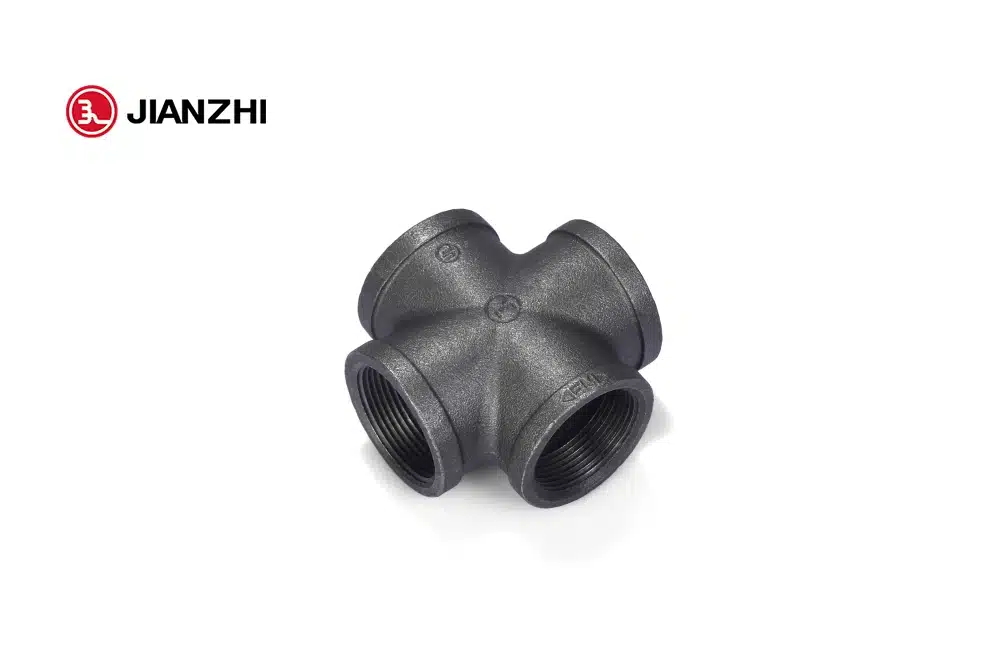What measures are in place to prevent contamination of the 4 way cross pipe fitting bath?
Preventing contamination of the galvanizing bath is crucial in ensuring the quality and effectiveness of the coating applied to 4-way cross pipe fittings. Contaminants in the bath can lead to defects in the coating and affect the overall performance of the galvanized product.
Here are measures typically in place to prevent contamination of the galvanizing bath:
- Proper Fluxing:
- Adequate fluxing of the 4-way cross pipe fittings is essential before immersion in the galvanizing bath. Proper fluxing helps remove oxides and other impurities from the surface, preventing them from entering the bath and causing contamination.
- Material Inspection:
- Thorough inspection of the 4-way cross pipe fittings is conducted before they enter the galvanizing process. Any materials with excessive rust, scale, or contaminants are addressed or rejected to prevent introducing impurities into the bath.
- Pre-Cleaning Processes:
- Prior to galvanizing, 4-way cross pipe fittings may undergo pre-cleaning processes, such as shot blasting or pickling. These processes remove any existing contaminants and prepare the surface for galvanization, reducing the risk of bath contamination.
- Controlled Material Handling:
- Careful handling of the pipe fittings during transportation and immersion is crucial. Specialized fixtures or equipment may be used to minimize contact with surfaces that could introduce contaminants into the bath.
- Bath Maintenance:
- Regular maintenance of the galvanizing bath is essential. This includes removing dross, zinc ash, and other debris that can accumulate over time. The bath is periodically cleaned to ensure a clean and uncontaminated environment for galvanizing.
- Filtration Systems:
- Filtration systems are often installed in the galvanizing bath to trap impurities and contaminants. These systems help maintain the cleanliness of the bath and prevent particles from adhering to the coated surfaces.
- Separate Baths for Specialized Coatings:
- In some cases, separate galvanizing baths may be designated for specialized coatings or specific materials. 4 way cross pipe fitting This segregation helps prevent cross-contamination and ensures that each bath is optimized for its intended use.
- Regular Analysis and Testing:
- Regular chemical analysis and testing of the galvanizing bath are performed to monitor its composition. This includes checking for the presence of contaminants and ensuring that the bath meets the specified requirements for effective galvanization.
- Staff Training and Procedures:
- Galvanizing facility personnel are trained to follow strict procedures to prevent contamination. This includes proper handling of materials, maintenance practices, and adherence to established protocols to minimize the risk of introducing impurities.
- Quality Control Inspections:
- Quality control inspections are conducted on a regular basis to detect any defects or irregularities in the galvanized coating. This includes visual inspections and adherence to industry standards to ensure the quality of the finished 4-way cross pipe fittings.
- Closed-Loop Systems:
- Closed-loop systems in the galvanizing process help minimize exposure to external contaminants. These systems are designed to control the environment and reduce the risk of airborne impurities entering the galvanizing bath.
- Environmental Controls:
- Environmental controls, such as air filtration and exhaust systems, are implemented to maintain a clean atmosphere in the galvanizing facility. This helps prevent external pollutants from entering the bath.
By implementing these measures, galvanizing facilities can significantly reduce the risk of contamination in the galvanizing bath, ensuring that the 4-way cross pipe fittings receive a high-quality and durable coating. Regular monitoring, maintenance, and adherence to best practices contribute to the overall effectiveness of the galvanizing process.
